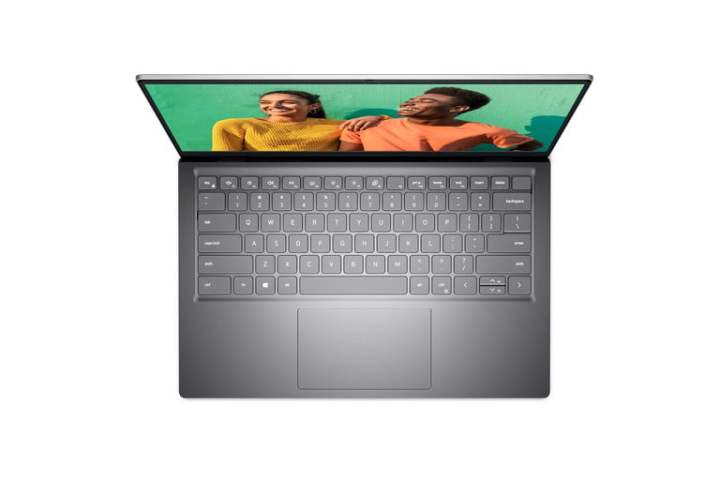One of the the best laptop brands is Dell, so picking your next laptop upgrade from its catalog is a great idea. But how do you differentiate between the different ranges? XPS is amazing, but the more affordable Latitude and Inspirons are well worth considering, too.
Some of the best models are definitively among the best Dell laptops you can buy in 2024, so let’s take a look at these two iconic ranges to see which is the better suit for you: Dell Latitude, or Dell Inspiron.
Design

Both Inspiron and Latitude laptops offer a variety of device sizes to choose from, but Inspirons offer more size options overall. Latitude laptops come in three sizes: 13 inches, 14 inches, and 15 inches. Inspiron allows customers to choose from five options, from 13 inches all the way to 17 inches. The latest Inspiron laptops only come in two styles: traditional clamshell laptops or 2-in-1s. The Latitude line offers a little more variety. You can get one of three styles: a detachable tablet-style PC, a clamshell, or a 2-in-1.
The features each Inspiron laptop has vary among its different sizes and styles, but as a whole, you can expect to see the following specs on some or all Inspiron laptops: displays with narrow bezels (of varying thickness), edge-to-edge keyboards, aluminum chassis (or exterior shells), webcam privacy shutters, backlit keyboards, and Thunderbolt 4 ports. The 13-inch clamshell Inspiron laptop also has a power button that includes a fingerprint reader. Inspiron laptops are also pretty lightweight overall, but their weights vary widely — you’ll find that they range from 2.78 pounds to 5.36 pounds.
When it comes to Dell’s Latitude line, you can also expect its design to vary among its models. But here’s what to expect overall: Thunderbolt 4 ports (for the more expensive models), non-backlit and backlit keyboards, an aluminum or carbon fiber chassis, thin bezels (of varying thicknesses), a fingerprint reader/power button combo, IR cameras, camera shutters, edge-to-edge keyboards, microSD card slots, and noise-canceling microphones. Because the Latitude line includes detachable tablet-style PCs, clamshells, and 2-in-1s, this laptop series is particularly lightweight and ranges from 1.70 pounds to 3.36 pounds.
Latitude laptop displays tend to skew toward higher resolutions and include FHD, 4K, FHD+, HD, and QHD. Inspiron displays usually feature FHD, 3K, and QHD+ resolutions.
Use cases: When is it best to buy a Latitude or an Inspiron?
When it comes to Latitude and Inspiron laptops, their respective use cases are already pretty well-defined by their manufacturer. The Latitude line is clearly marketed as a line of business laptops, and the Inspiron line has been given the “for home” designation. And so, the short answer is: Latitudes are best for remote workers and those who travel for business. Inspirons are designed for “home” use, but that nebulous description does open Inspirons to a wider number of uses than Latitudes. More on that later.
For business: Choose Latitude

The emphasis on business use for Latitude laptops can be seen in its included features: Corning Gorilla glass displays for durability while traveling for work, SafeScreen features to keep your work private, Thunderbolt 4 and HDMI 2.0 ports, up to 32GB of RAM, up to 1TB of solid-state drive (SSD) storage, Windows 11 Pro, and 13th-generation Intel Core i5 and i7 processors with a variety of power ratings, core counts, and threads.
Dell also offers three other notable features that boost the Latitude’s reputation as a business laptop: ExpressConnect, ExpressSign-in, and “intelligent audio.” ExpressConnect automatically prioritizes connecting to the strongest wireless access point no matter where you are. ExpressSign-in features a proximity sensor that senses your presence and then will “instantly wake and log you in via the IR camera and Windows Hello.” If you’re away from your Latitude laptop, it will lock itself to secure your work. And “intelligent audio” is a feature that enhances your videoconferencing experience by improving audio quality and decreasing background noise.
For home (and other uses): Choose Inspiron

The Inspiron line is somewhat vaguely described by Dell as “for home.” But that doesn’t mean using it at home is your only option or that personal use is the only appropriate use case for it. In fact, two of our “best laptops” shopping guides feature Inspiron laptops on them for different reasons.
Best (budget) business laptop
In our best laptops under $1,000 list, we actually named an Inspiron laptop as our pick for the best business laptop at that price: The 2022 Dell Inspiron 15 7000. This particular Inspiron laptop comes with a large 15.6-inch screen and HDMI and Thunderbolt 4 ports. When we reviewed its predecessor, we appreciated how upgradeable it was and liked its keyboard and touchpad.
Best for college students
There are Dell laptops listed in our best laptops for college guide, and the Dell G15 gaming laptop tops the list. It was our pick for college student gamers on a tight budget. At its lowest price configuration, the current version of the Inspiron G15 Gaming Laptop features a 13th-generation Intel Core i5 processor, Windows 11 Home, 8GB of RAM, 256GB of SSD storage, an Nvidia GeForce RTX 3050 GPU, and a 15.6-inch FHD 120Hz non-touch display. You can upgrade to a 360Hz FHD display and an RTX 4060.
Which is easier on your wallet: Inspiron or Latitude?
Overall, if you’re looking at just affordability, Inspiron laptops win the price category easily. And it makes sense. Laptops that are marketed as “for home” don’t necessarily need to be loaded up with expensive specs and features. Inspirons tend to be best for students or those who just want a casual laptop for personal use.
The Inspiron line comes in five different sizes, and the price ranges in each size category do vary quite a bit, but generally speaking, for an Inspiron laptop, you could be spending anywhere from $389 to $1,800. And that’s not even including any discounts you might find or sale prices from other retailers.
The Latitude line is a line of business laptops. They’re designed for professional use and to be portable workstations. And as such, they’re priced accordingly. Laptops that are built to handle long work hours, have high-quality video conferencing capabilities, and have security and privacy tools tend to be outfitted with higher specs, more features, and, naturally, hefty price tags.
Latitude laptops only come in three sizes, but each size category has lots of different laptop model options to choose from, so the prices vary wildly in each size category. But generally speaking? You can expect to pay anywhere from $897 (for a laptop in the 13-inch size category) all the way up to $5,750 for a laptop in the 15-inch size category. With Latitude, you’re far more likely to spend more than $1,000 on a laptop. But you’re getting more features and more capacity in those higher price ranges. Again, these prices don’t take into account sales, discounts, or prices you’ll find from other retailers.
Inspiron clearly wins the price category because it just has more affordable options than the Latitude line of laptops.
What about Dell XPS laptops?
XPS laptops are targeted at a different audience with typically higher budgets, and a greater emphasis on style. While they have a lot of substance, too, there’s no denying that with Dell XPS laptops you’re often paying a little extra for the brand and the overall look and feel of the laptop. With Dell Latitude and Inspiron laptops, there’s much more focus on the function of the device, than the form.
That’s not to say Inspiron and Latitude laptops don’t look good, too, or don’t exhibit the same impressive lightweight designs and long battery life. But they are more affordable because they don’t tend to offer the complete package in the same way. You can easily get a laptop in the Inspiron and Latitude ranges that can compete with an XPS laptop, but perhaps not in every category at the same time.
Verdict: Which is better?
In this comparison, there is no clear winner. It really all depends on how you’re planning on using your new laptop and your budget. If you need a true workstation for your work-from-home setup or small business, get a Latitude. You’ll spend a lot more, but the security features, productivity-optimizing tools, and long battery life usually make the hefty price tag worth it.
If you just need a budget-friendly, all-purpose laptop for school or home, get an Inspiron. The prices can’t be beat, and you can still get the latest Intel processors and FHD displays even when you spend less.
Editors’ Recommendations

